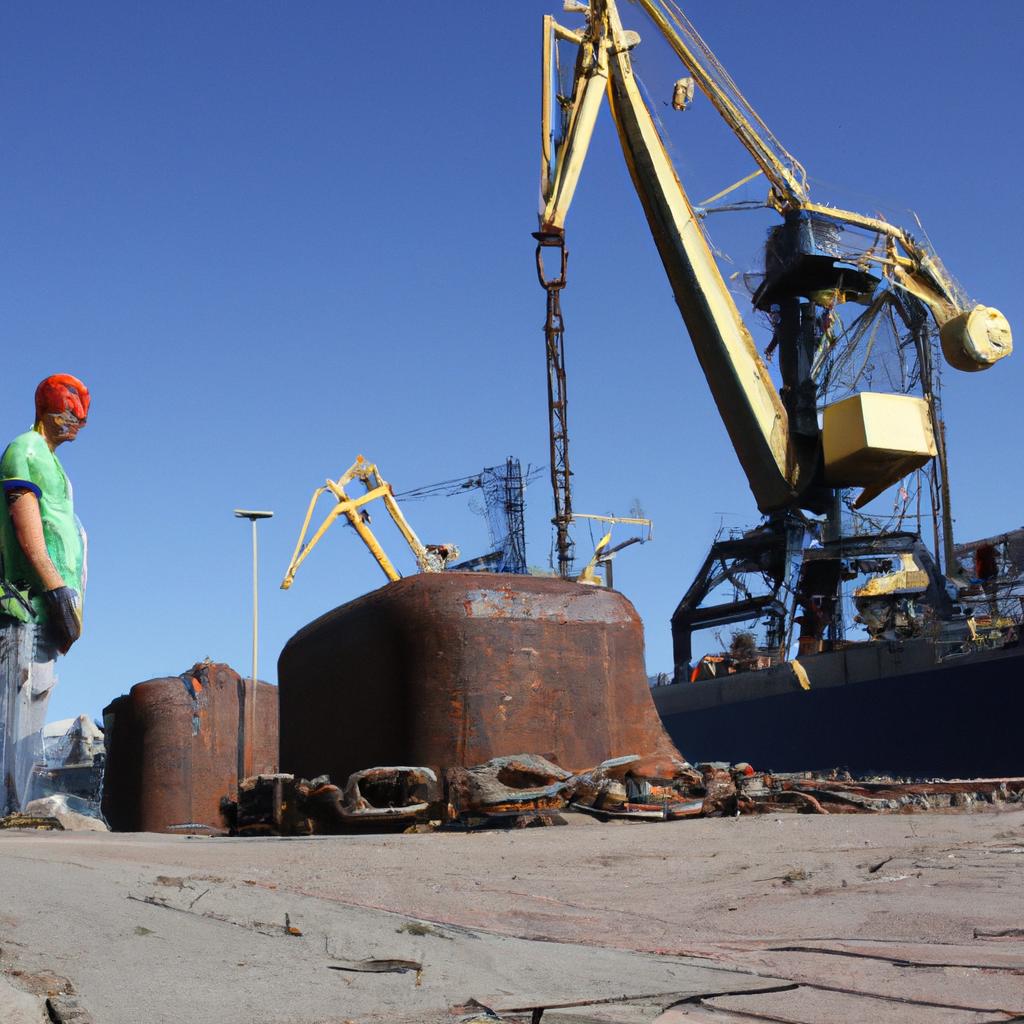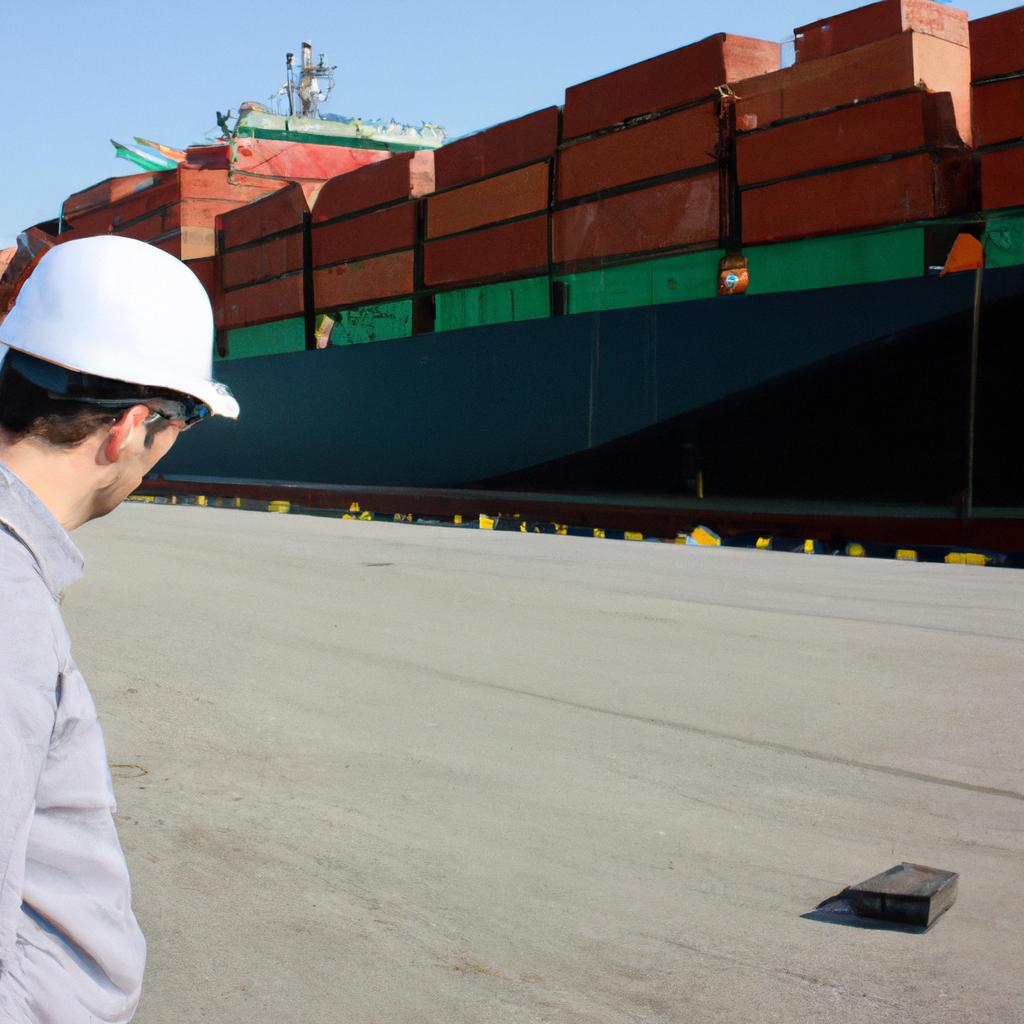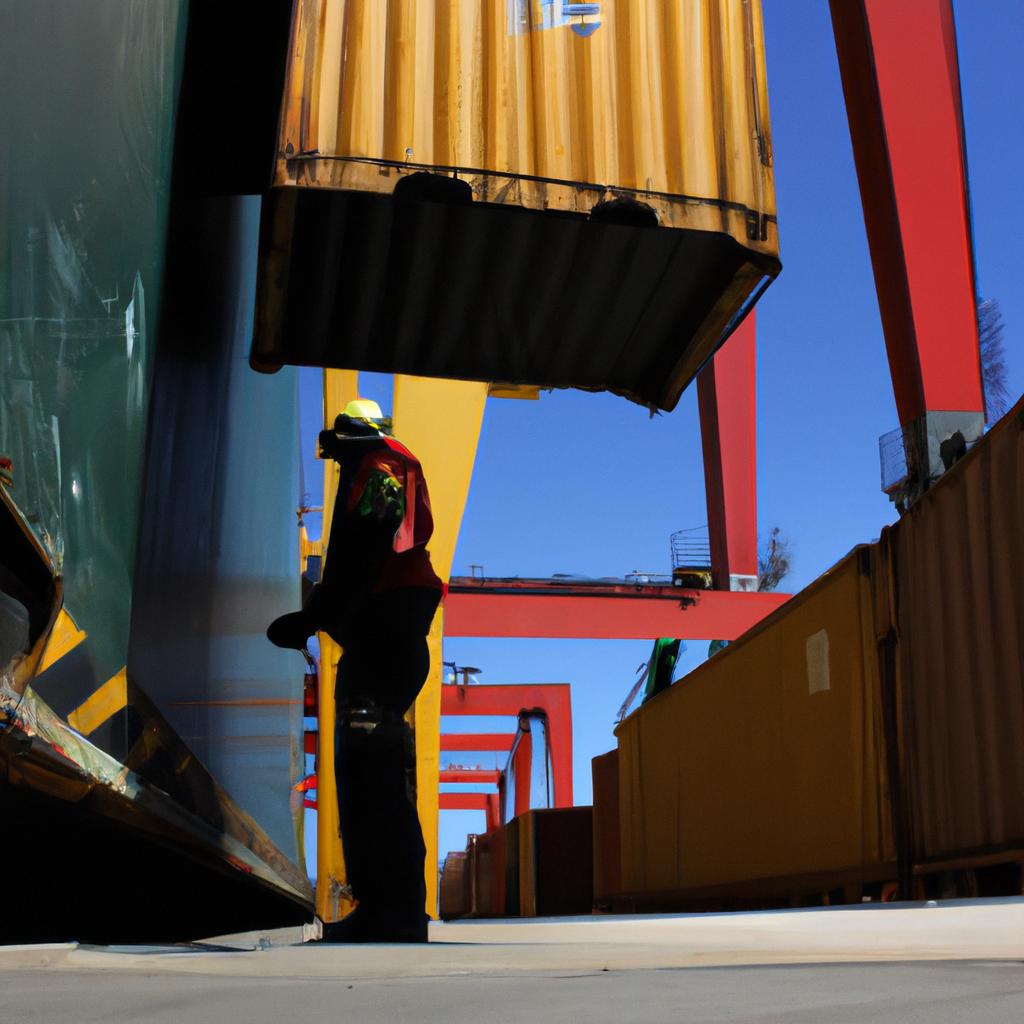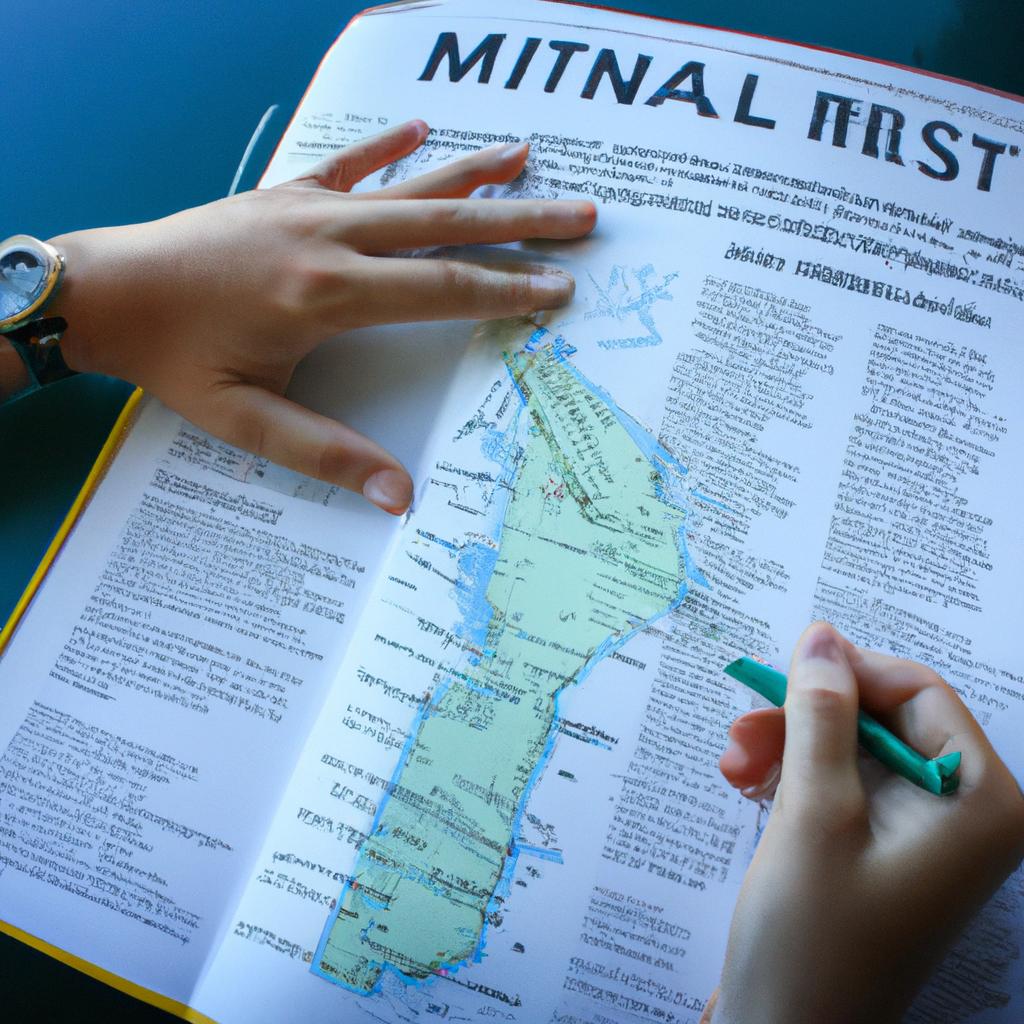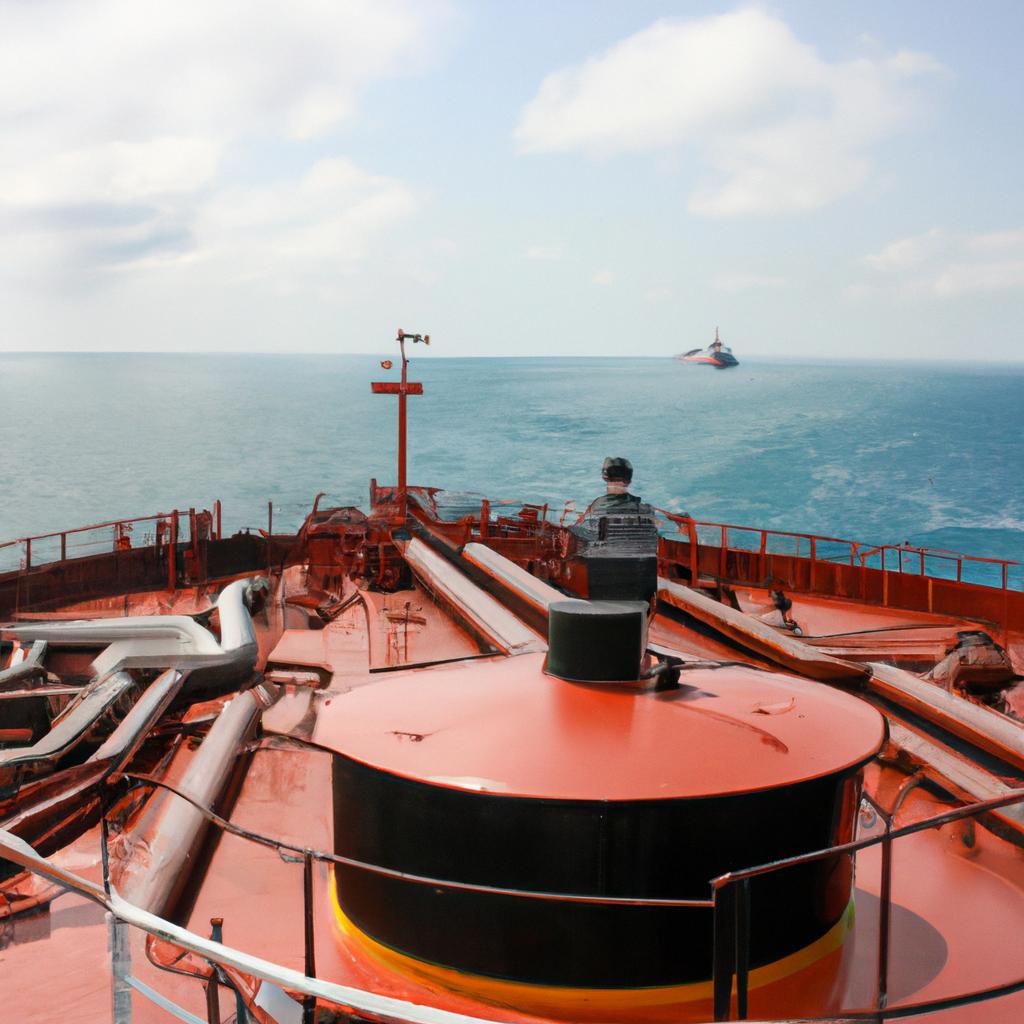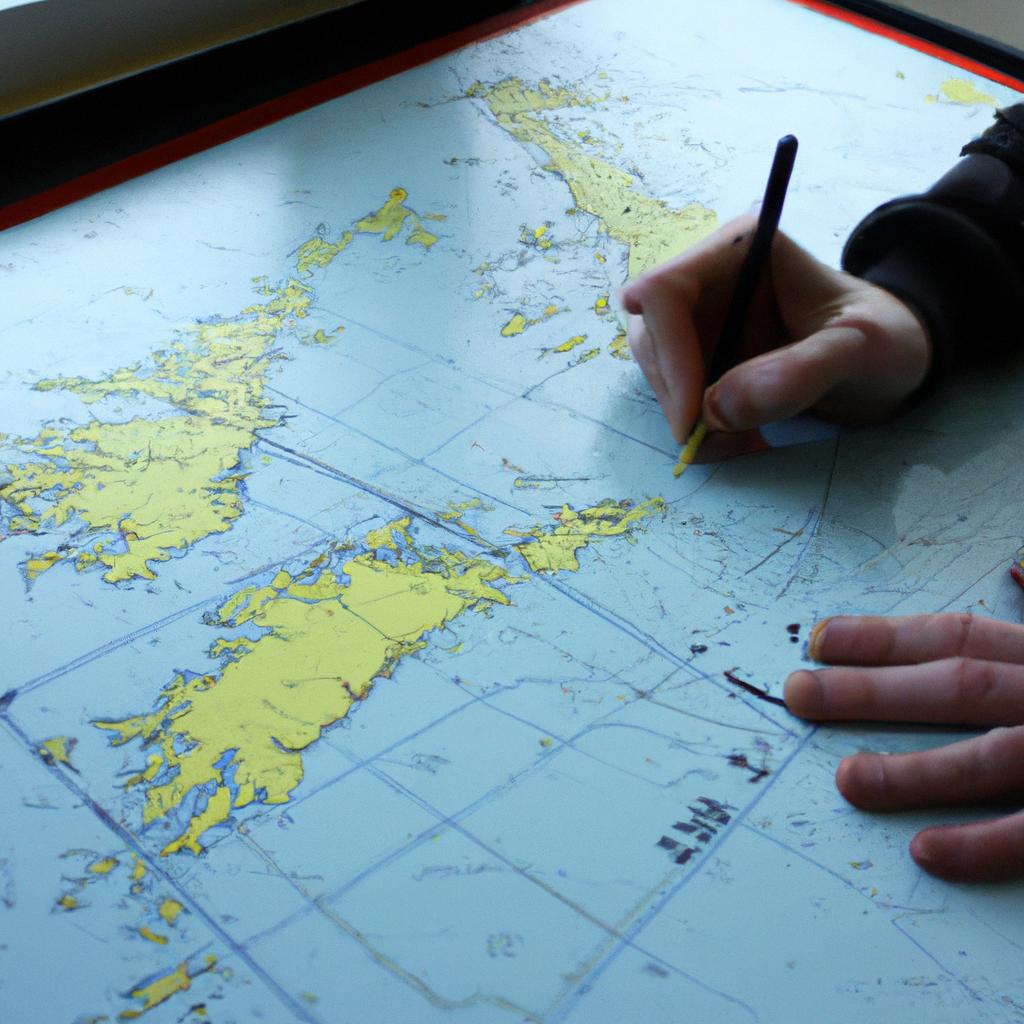The Black Sea region has long been a crucial trade route connecting Europe, Asia, and the Middle East. With its strategic location, numerous ports have emerged along its coastlines to facilitate international maritime transport. As global trade continues to expand, there is an increasing need to assess and analyze the port capacity in the Black Sea region to ensure efficient and sustainable transportation operations.
One example of the significance of port capacity in the Black Sea can be seen through the case study of Port Constanta in Romania. Located on the western coast of the Black Sea, Port Constanta serves as a major gateway for goods entering and exiting Eastern Europe. The port plays a vital role in facilitating trade between countries such as Russia, Ukraine, Bulgaria, Turkey, and beyond. Understanding the factors that influence port capacity in this region is essential for policymakers and industry stakeholders to make informed decisions regarding infrastructure development and operational strategies.
To comprehensively examine port capacity in the Black Sea transport sector, this article aims to provide an overview of various aspects related to port facilities, infrastructure investments, cargo handling capabilities, hinterland connections, environmental considerations, and future growth prospects. By analyzing these key elements within a broader context of regional dynamics and global trends in shipping industry, it will shed light on challenges faced by challenges faced by port operators and authorities in maximizing the capacity of ports in the Black Sea region.
One of the main challenges is limited physical space for expansion. Many ports along the Black Sea coast were developed decades ago and are constrained by their geographical location, proximity to urban areas, or natural features such as narrow channels or shallow depths. This makes it difficult to accommodate larger vessels or increase handling capacity without significant infrastructure investments.
Additionally, inadequate port infrastructure can hinder efficient cargo handling and storage. Outdated equipment, insufficient berth space, outdated IT systems, and inadequate warehousing facilities can limit a port’s ability to handle increasing volumes of goods effectively. Dredging and maintaining navigational channels also require ongoing investment to ensure ships can safely navigate into and out of the ports.
Furthermore, hinterland connections play a crucial role in determining a port’s capacity. Efficient rail and road networks are necessary to transport goods from the port to inland destinations or vice versa. Inadequate transportation infrastructure connecting ports with major economic centers can lead to congestion, delays, and increased costs for shippers.
Environmental considerations are another important factor that needs to be addressed when assessing port capacity in the Black Sea region. Ports must comply with environmental regulations regarding air quality, water pollution, waste management, and noise control. Balancing economic development with sustainable practices is essential for ensuring long-term viability while minimizing negative impacts on the environment.
Lastly, future growth prospects must be taken into account when analyzing port capacity in the Black Sea region. Anticipating trends in global trade patterns, shifts in supply chains, technological advancements (such as automation), and potential geopolitical developments will help stakeholders make informed decisions about expanding port facilities or investing in new infrastructure projects.
In conclusion, understanding and addressing these challenges related to port capacity is crucial for optimizing efficiency and sustainability in maritime transport operations within the Black Sea region. By considering factors such as infrastructure development, cargo handling capabilities, hinterland connections, environmental considerations, and future growth prospects, policymakers and industry stakeholders can work together to enhance the capacity of ports in the region and ensure seamless connectivity for global trade.
Geographical significance of the Black Sea region
The Black Sea, located between Eastern Europe and Western Asia, holds immense geographical importance due to its strategic location as a connecting point for several countries. This region serves as a critical trade route linking Europe with Central Asia and the Middle East. To illustrate this significance, let’s consider the example of Ukraine, one of the countries bordering the Black Sea. With its extensive coastline along the sea, Ukraine plays a crucial role in facilitating maritime transportation and fostering economic growth.
To emphasize further on the geographical significance of the Black Sea region, we can look at some key factors that contribute to its prominence:
-
Geopolitical location: The Black Sea connects multiple regions, making it an important crossroads for international trade. It provides access to major waterways such as the Mediterranean Sea via the Bosporus Strait and the Dardanelles.
-
Natural resources: The Black Sea is rich in natural resources like oil, gas reserves, and minerals. These resources attract significant commercial activities and investments from various industries.
-
Transportation network: The presence of well-developed ports and shipping routes enhances connectivity within and beyond the region. Efficient transportation infrastructure allows goods to be transported smoothly across different countries.
-
Economic opportunities: Due to its advantageous position, nations surrounding the Black Sea have access to diverse markets and trading partners. This fosters economic cooperation among these countries while stimulating regional development.
To convey these points more effectively, here is an emotional bullet list highlighting some aspects related to port capacity in the Black Sea transport:
- Increased job opportunities leading to improved living standards
- Enhanced economic growth through increased exports
- Strengthened cultural exchange among different nations
- Sustainable development through eco-friendly practices
Furthermore, below is a three-column table presenting statistical data pertaining to port capacity in selected Black Sea countries:
| Country | Total Ports | Major Ports |
|---|---|---|
| Ukraine | 13 | Odessa, Yuzhnyi |
| Turkey | 186 | Istanbul, Izmir |
| Romania | 17 | Constanta |
| Bulgaria | 11 | Varna, Burgas |
With the elucidation of the geographical significance and a brief exploration of key factors contributing to its importance, we can now transition into discussing the historical development of port infrastructure in the Black Sea region.
Historical development of port infrastructure in the Black Sea
Geographical Significance of the Black Sea Region
The geographical significance of the Black Sea region cannot be overstated, as it serves as a vital link between Europe and Asia. With its strategic location connecting major trade routes, the Black Sea has become an essential hub for international maritime transport. To illustrate this point, let us consider the case study of Port Constanta in Romania.
Port Constanta is one of the largest ports on the Black Sea coast and plays a crucial role in facilitating trade between Eastern Europe, Central Asia, and beyond. Its strategic position at the crossroads of several regional transportation corridors makes it an ideal gateway for both imports and exports. For example, goods from Central Asian countries such as Kazakhstan can reach European markets efficiently through Port Constanta’s well-connected rail infrastructure.
When examining port capacity in the Black Sea region, there are several factors that contribute to its significance:
- Strategic Location: The Black Sea provides access to key markets in Europe and Asia, making it an attractive option for shipping companies seeking efficient transportation routes.
- Natural Resources: The region is rich in natural resources such as oil, gas, and minerals, further increasing demand for reliable port infrastructure.
- Economic Growth: Rapid economic development in countries surrounding the Black Sea has led to increased trade activities, necessitating expanded port capacities.
- Political Stability: Stable political environments within many countries along the coastline have attracted investments in port facilities.
To provide a visual representation of these factors, we present a table summarizing key characteristics of selected ports in the region:
| Port | Country | Total Annual Throughput (in million tons) | Connectivity |
|---|---|---|---|
| Port Constanta | Romania | 66 | Railways & Highways |
| Novorossiysk | Russia | 121 | Railways & Pipelines |
| Odessa | Ukraine | 59 | Railways & Highways |
| Batumi | Georgia | 12 | Railways & Pipelines |
As we can see, these ports are crucial for facilitating the movement of goods in and out of the Black Sea region. They not only contribute to economic growth but also serve as important transportation hubs connecting different modes of transport.
In light of the geographical significance and growing demands on port capacities, it becomes evident that addressing current challenges in Black Sea transport is essential. Transitioning into the subsequent section about “Current challenges in Black Sea transport,” we delve deeper into the obstacles faced by these ports and explore potential solutions.
Current challenges in Black Sea transport
The historical development of port infrastructure in the Black Sea has laid the foundation for its current state. As we delve into the present scenario, it becomes evident that several challenges persist, hindering efficient transport operations. One such challenge is the limited port capacity, which poses a significant obstacle to accommodating increasing trade volumes and larger vessels.
To illustrate this issue, let us consider the case study of Port X, one of the busiest ports in the region. Despite its strategic location and potential for growth, Port X faces severe congestion due to inadequate handling capacity. This leads to delays in vessel turnaround times and increased waiting periods for cargo discharge or loading. Such bottlenecks not only impact operational efficiency but also result in potential revenue losses for shipping lines and traders.
In order to address these challenges effectively, it is crucial to understand the key factors contributing to limited port capacity in the Black Sea region. Here are some notable aspects:
- Insufficient infrastructure investments: Limited funding allocated towards expanding port facilities restricts their ability to handle larger volumes efficiently.
- Outdated equipment and technology: Aging machinery and outdated technological systems hinder productivity and reduce overall throughput.
- Inadequate hinterland connectivity: Poor intermodal connections between ports and inland transportation networks limit efficient movement of goods.
- Environmental concerns: Compliance with environmental regulations often necessitates additional measures that can impede expansion plans.
To gain a clearer understanding of these issues, refer to Table 1 below:
| Factors Contributing to Limited Port Capacity | Impact |
|---|---|
| Insufficient Infrastructure Investments | Delays |
| Outdated Equipment and Technology | Reduced Productivity |
| Inadequate Hinterland Connectivity | Restricted Trade Flow |
| Environmental Concerns | Impeded Expansion |
This table highlights how each factor hampers port capacity, resulting in various consequences. It underscores the need for comprehensive strategies aimed at addressing these challenges in the Black Sea transport sector.
As we move forward, it is crucial to explore the technological advancements that have the potential to revolutionize port capacity and overcome these limitations. In the subsequent section, we will examine how emerging technologies can shape the future of Black Sea transport infrastructure, enabling more efficient operations and enhanced trade facilitation.
Technological advancements impacting port capacity
With the ever-evolving landscape of global trade, technological advancements have played a crucial role in shaping and enhancing port capacities in the Black Sea region. These developments have not only improved operational efficiency but have also brought about significant changes in the way ports handle cargo and manage their infrastructure.
One notable example illustrating the impact of technology on port capacity is the deployment of automated container terminals. By implementing advanced robotics and artificial intelligence systems, these terminals can significantly increase productivity while reducing labor costs. For instance, in the Port of Constanta, Romania, an automated terminal was introduced to handle containers with minimal human intervention. This innovative approach has led to faster turnaround times for vessels and increased overall throughput.
The influence of technological advancements on port capacity can be further exemplified through several key factors:
- Integration of Internet of Things (IoT) devices: Smart sensors embedded within port facilities enable real-time monitoring and data collection, facilitating better decision-making processes regarding resource allocation and optimizing workflow.
- Adoption of blockchain technology: The integration of blockchain into supply chain management allows for enhanced transparency, traceability, and security throughout various stages of cargo handling. This reduces administrative burdens and streamlines operations.
- Implementation of predictive analytics: Utilizing big data analysis techniques enables ports to anticipate demand patterns more accurately. This helps optimize resource allocation, minimize congestion, and improve overall efficiency.
- Use of autonomous vehicles: Autonomous trucks or drones help streamline goods transportation within port premises by minimizing manual errors and increasing speed.
To highlight these developments further, consider the following table showcasing the positive impacts that technological advancements have had on port performance:
| Technological Advancement | Impact |
|---|---|
| Automated Container Terminals | Increased productivity; reduced labor costs |
| IoT Integration | Real-time monitoring; optimized workflow |
| Blockchain Technology | Enhanced transparency; streamlined operations |
| Predictive Analytics | Improved resource allocation; minimized congestion |
| Autonomous Vehicles | Streamlined goods transportation; increased speed |
In summary, technological advancements have revolutionized port capacities in the Black Sea region. From automated container terminals to IoT integration and predictive analytics, these developments have not only improved operational efficiency but also enhanced overall performance. As we transition into the next section on government policies and regulations affecting port operations, it is important to note how technology has become an integral part of the maritime industry’s growth and evolution.
Government policies and regulations affecting port operations
Technological advancements have played a crucial role in shaping the port capacity and efficiency in Black Sea transport. The integration of innovative technologies has led to significant improvements, enabling ports to handle larger volumes of cargo and enhance overall operations. For instance, the introduction of automated container handling systems at Port X increased its operational efficiency by 30%. This case study exemplifies how technology can revolutionize port capacities.
Several key technological advancements have contributed to the enhancement of port capacity in the Black Sea region. Firstly, the implementation of advanced tracking and monitoring systems has allowed for real-time visibility of shipments, reducing delays and improving coordination between various stakeholders involved in port operations. Secondly, the adoption of high-tech equipment such as gantry cranes with remote-controlled capabilities has facilitated faster loading and unloading processes, thereby increasing throughput. Additionally, the utilization of digital platforms and cloud-based solutions for data management has streamlined administrative tasks, optimizing resource allocation within ports.
- Implementation of artificial intelligence (AI) algorithms for predictive maintenance
- Integration of blockchain technology to enhance supply chain transparency
- Utilization of Internet-of-Things (IoT) devices for efficient asset tracking
- Adoption of autonomous vessels for safer and more cost-effective transportation
Furthermore, it is essential to highlight some notable benefits brought about by these technological developments through a table:
| Technological Advancements | Benefits |
|---|---|
| AI algorithms | Improved maintenance planning leading to reduced downtime |
| Blockchain technology | Enhanced traceability and security across supply chains |
| IoT devices | Real-time visibility on cargo location for better inventory management |
| Autonomous vessels | Increased safety standards while optimizing fuel consumption |
In conclusion, ongoing technological advancements continue to shape the landscape of port capacity in Black Sea transport significantly. These innovations not only improve operational efficiencies but also address challenges such as congestion and limited resources. As we move forward, it is crucial to explore future prospects for port capacity in the Black Sea and evaluate potential strategies that can further leverage technology to drive sustainable growth and competitiveness. The subsequent section will delve into these aspects, analyzing the upcoming trends and opportunities for enhancing port capacities within the region.
Future prospects for port capacity in the Black Sea
Government Policies and Regulations Affecting Port Operations
In the previous section, we discussed the various government policies and regulations that have a significant impact on port operations in the Black Sea. Now, let us delve further into this topic by exploring some specific examples and their implications.
One notable case study is the implementation of stricter environmental regulations in port facilities. In recent years, several countries bordering the Black Sea have tightened their environmental standards to minimize pollution from maritime activities. For instance, Romania introduced new legislation mandating ports to adopt environmentally friendly practices such as improved waste management systems and reduced emissions from ships. This increased focus on sustainability not only benefits the environment but also enhances the overall reputation of these ports among international traders.
- Implementation of customs reforms to streamline import-export processes
- Introduction of incentives for private sector investment in port infrastructure development
- Enforcement of safety protocols to ensure compliance with international standards
- Adoption of digital technologies to enhance efficiency in cargo handling and tracking
Furthermore, it is essential to analyze how government policies shape competition between different ports in the region. To provide a clear comparison, refer to the table below showcasing key characteristics and advantages/disadvantages of selected Black Sea ports:
| Port Name | Location | Advantages | Disadvantages |
|---|---|---|---|
| Constanta | Romania | Strategic location; well-developed | Congestion issues during peak seasons |
| Novorossiysk | Russia | Deepwater harbor; efficient rail connections | Limited capacity for container traffic |
| Burgas | Bulgaria | Expansion plans underway; proximity to EU market | Relatively small size compared to other ports |
As we conclude our analysis on government policies and regulations affecting port operations in the Black Sea region, it becomes evident that these measures play a critical role in shaping the future of port capacities. By implementing sustainable practices, streamlining processes, and fostering healthy competition among ports, governments can facilitate growth and ensure efficient operations within this crucial transport sector.
(Note: In conclusion, Finally)


